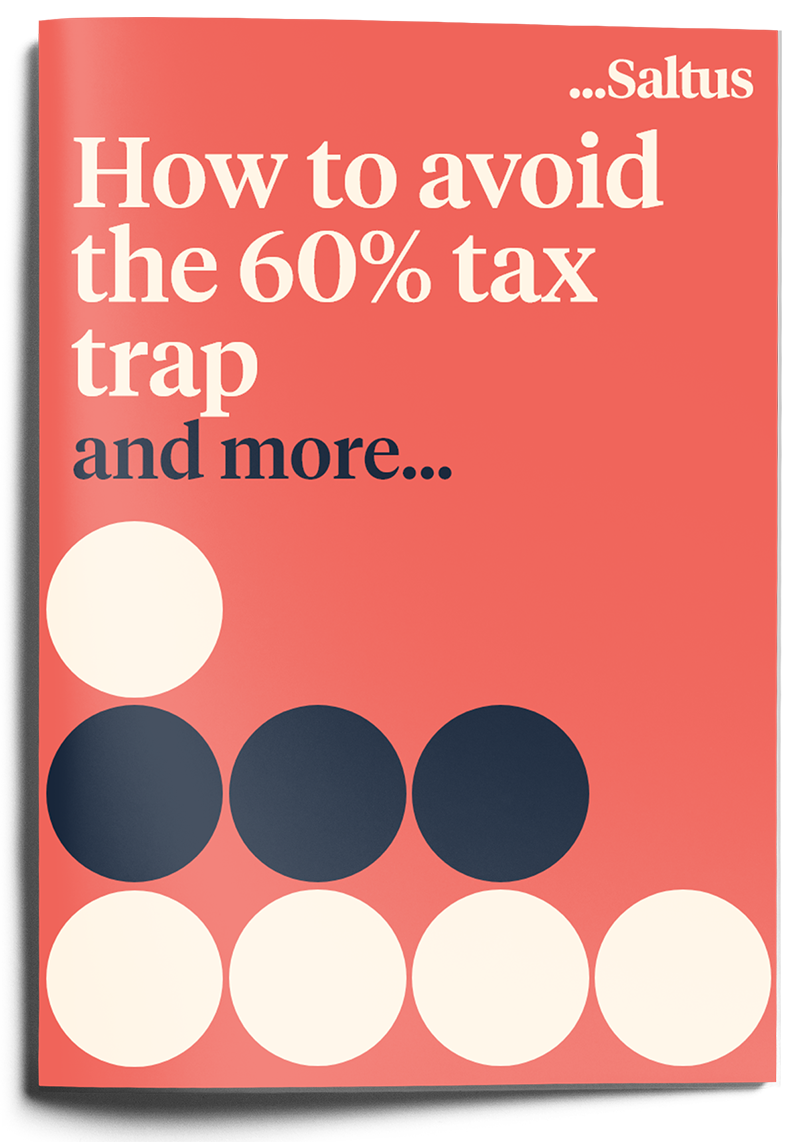The Lifetime Allowance (LTA) at face value could be considered a rather straightforward aspect of financial planning. It is simply the combined amount of money an individual can hold within all of their pensions before they incur an LTA tax charge. If only it was that simple though…
To start exploring how best to manage the LTA, we first need to understand how you might have got there. The current Lifetime Allowance is £1,073,100. However, that doesn’t provide for a ‘catchy’ title, so we are approaching the planning in the context of those with £1,000,000 or more in their pension pot.
We have covered off the effects of the LTA in previous articles but to recap:
- Anything over the LTA taken as a lump sum attracts a 55% LTA charge
- Regular income taken over the LTA attracts a 25% LTA charge, but you pay tax at your marginal rate when you receive it (don’t be a higher or additional rate taxpayer in retirement basically!)
- There is a final test at age 75 where only the 25% charge applies.
Understanding how the charge occurs can open up many more options for your approach to planning.
So, some tips to get you started:
Tip 1: Understand what your remaining allowance is (pre-retirement)
- This is simple if you have never taken any benefits from your pensions as it will normally be the current LTA.
- You may well have applied for LTA protection, in which case you will have a specific LTA.
Tip 2: Understand what your remaining allowance is (post-retirement)
- If you have taken benefits previously, then these would have been assessed on the LTA at the time. To help simplify this, it’s converted to a percentage so it can be more easily applied against future benefit crystallisation events (the jargon for taking money out).
- An example of this may be taking £25,000 tax free cash out in 2016. To do this, you would have crystallised £100,000 to gain access to 25% of this as tax free cash. The whole £100,000 is tested against the LTA which, at the time, would have been £1,000,000 and therefore 10% has been used (£100,000/£1,000,000), with 90% remaining. The remainder may be tested against a different Lifetime Allowance value.
How to avoid the 60% tax trap and more…

Did you know that people earning over £100,000 can pay an effective tax rate of 60%?
Tip 3: Understand what the effect of the allowance might be in the future
- Defined contribution (DC) pensions are relatively straight forward when you test against the LTA, and you can fairly easily grasp what your remaining allowance is. Projecting this forward, however, is based on a myriad of assumptions and informed guess work, as you simply do not know how much your pension will or will not grow by.
- Defined benefit (DB) pensions, on the other hand, come with a tad more clarity on future LTA usage, as long as you are no longer actively contributing. Each year, you should have two figures on your statement – what your annual pension will be at retirement and how much tax-free cash you may be able to take. Multiply the annual pension by 20 and add the tax-free cash: that’s your monetary value against the LTA. Its still vital to seek advice in these areas as the above method only provides a snapshot. DB figures will be amended by scheme specific revaluation rates and also tweaked by how early or late you retire (based on the schemes normal retirement age (NRA).
- Going back to our 2016 example (because the maths is easier), an annual pension of £20,000 with tax free cash available of £100,000 would be:
(£20,000 x 20) + £100,000 = £500,000
£500,000/£1,000,000 = 50%
It’s a bit of a myth that the LTA means you need to stop your pension planning. However, it is a relatively understandable concern as the frightening figure of a 55% tax charge is flashed around. We can all agree it’s a little off-putting! I have previously explored some high level options to control your LTA exposure (view the article here). However, two years have since passed and the LTA has not changed at all. This “freeze” now needs to be incorporated into our LTA management and we need to be aware of the impacts and options in front of us to keep your planning journey on track.
So, you might now have identified that you are near the LTA…what are you going to do about it?
Do you need help with your retirement planning?
Our specialists can help you prepare for retirement and provide ongoing advice once retirement has arrived. Get in touch to discuss how we can help you.

Knowing when to spend it
Sometimes your potential LTA issue may simply sort itself out. With Flexible drawdown pensions for example, once you have crystallised and taken your allotted tax-free cash (whether over time or all at once), you are left with the taxable income from your pensions in the pot. Any growth on this pot up to age 75 then gets tested against your LTA. Simply by taking withdrawals and living your best retirement, you may well be accidentally be managing your LTA. The next level of this, however, is to ensure you are doing this without creating unnecessary tax leakage, as you don’t want to avoid the LTA by paying additional rate income tax in retirement!
So how do you do this more purposefully? You need to be aware of the tax allowances available to you. For those fortunate enough to retire ahead of state pension age, you will likely have a generous £12,570 of personal allowance going spare. Simple management would be to take pension withdrawals within this limit to supplement tax free income and manage the growth to reduce consequent LTA exposure down the line.
Assuming you have utilised 100% of your LTA at age 60 and have taken your full TFC from a £1,000,000 pension pot:
- A £750K crystallised pension growing at 5% annually (ignoring any charges) would generate total growth of £809,196.10. As the LTA has been used up, all of this is liable to a charge at 75 equalling £202,299 LTA.
- Taking just £12,570 per annum between 60 and 75 reduces this charge to £134,488 (assuming the state pension is ignored).
- Withdrawing up to your basic rate band (£50,270) and allowing for the state pension to kick in at age 67 reduces this further to £0.
Simply by supporting your spending from the pension, you have potentially saved yourself £202,299 of LTA tax charges. Now the reality here is that this still comes with a cost. Our case study client here would have paid £120,640 of basic rate tax over the 15 year period. That’s still £14,000 less than LTA charge suffered by just drawing up the £12,750 personal allowance though!
Managing by spending assumes that we have full control within a DC pensions scheme to vary the income. There will, of course, be scenarios where you don’t.
Varying your DB income
How you approach management of the LTA by taking your DB scheme first, could well lock in your full guaranteed pension income and consequently reduce the LTA impact. Unfortunately, it is somewhat of a balancing act if you have multiple plans and a DC scheme in place as well. The benefit of this may not suit everyone but, in its simplest form, it means the potential LTA tax charge can be taken from the DC scheme and therefore you have more control (as we explored above).
To carry on our jargon busting, you may also have seen phrases like “commutation factor” or “PCLS” (Pension Commencement Lump Sum) dotted around your pension paperwork, likely hidden in that drawer you always intend to open but never do. These refer to your entitlement for tax-free cash and this can work quite differently within a DB scheme. You may well have a commutation factor, which dictates the ratio of what tax-free cash you can take when you commence your pension income from a DB. This sum is also included in the LTA calculation and added to the 20x multiple of your annual income.
At this stage, your planning really needs to become more subjective as opposed to just targeting the best way to avoid a tax bill. This is where the difference between managing and mitigating the LTA tax charge comes into play.
When you exceed the LTA in a DB scheme, you may find there is an excess debit factor used to calculate the deduction you may receive. Your scheme will divide the excess amount of your scheme over the LTA by the debit factor to calculate what reduction you may receive to your annual pension income. In reality, this would be work for your planner, however, the table below breaks down the tactics that you can use to control this reduction (and in turn your LTA charge) – in this case it is by reducing your tax-free cash taken from the scheme.
Example:
Client A – They opt to take their full available Tax-Free Cash at their selected retirement age.
Client B – They opt to reduce their Tax-Free Cash at retirement and exchange this for a slightly elevated annual pension.
| Client A | Client B | |
|---|---|---|
| Annual pension entitlement | £46,000.00 | £47,500.00 |
| Lump sum taken | £170,000.00 | £115,000.00 |
| Capital value | £1,090,000.00 | £1,065,000.00 |
| Excess over LTA | £16,900.00 | N/A |
| LTA tax charge (25% due to pension being taken as regular income) | £4,225.00 | N/A |
| LTA excess debit (debit factor 17.7) | £238.70 | N/A |
| Net annual pension | £45,761.30 | £47,500.00 |
This may seem like madness, giving up tax-free cash in return for taxable income! But remember, this is guaranteed taxable income – a valuable guarantee that can meet your expenditure. It is yours and your planner’s role to establish where your priorities lie. The scenario above is close to the wire and you may not quibble over a £238.70 deduction, however, if this is compounded by larger numbers, you may start to take an interest!
Furthermore, you may well find that you have alternative options within your DB scheme regarding the LTA charge. Some will quite literally not pay over the LTA, and you may find the charge is deducted at 55% from the excess cash commuted. If you have options, it’s key that you work with your planner to assess the pros & cons of both sides in line with your individual objectives.
Do you need help with your retirement planning?
Our specialists can help you prepare for retirement and provide ongoing advice once retirement has arrived. Get in touch to discuss how we can help you.

IHT balancing act
The other aspect here is the crossover into the realms of inheritance tax (IHT). By this, I mean that, all of a sudden, your tax-free cash lands in your estate and is taxable at 40% upon death, if above your allowances. Not the end of the world for a DB scheme, where the income dies with you. However, when there are DC schemes involved, all of a sudden you may be pulling assets into your estate that do not need to be liable to an IHT charge – this is where your individual objectives need to take the driving seat before any plans are finalised.
There is a ‘sneaky’ aspect of the LTA test at age 75 where they take into consideration any of the growth that you have had on crystallised funds. What that means in real terms is that any money you make on your investment, after your tax-free cash is taken out, also gets added against your LTA.
So, if you do decide to access your full tax-free cash to reduce the impact of the LTA, you ideally wouldn’t want this to be sat there without facilitating your expenditure needs. If you don’t plan to spend the money, you may be moving it away from a potential 25% LTA tax charge but straight into the path of a 40% IHT bill.
Working with a planner will enable you to stress test these objectives and create a strategic plan to draw upon your pensions in the most efficient way. Since 2015, pension freedoms have allowed you to take small amounts of your tax free cash at a time, sometimes known as phased drawdown. This allows for a strategic approach to managing your LTA whilst keeping your IHT objective in the headlights.
By slowly crystallising small amounts you can ensure you leave more in the pension pot. The benefit of this is three-fold:
- More remains outside of the estate
- Your tax free cash entitlement may in fact grow as the uncrystallised funds could benefit from growth
- You only use small percentages of your LTA at a time which allows for you to leave headroom for potential future changes (hopefully increases) to the LTA
What not to do
The scary levels of a 55% tax charge can sometimes cause people to make knee jerk reactions to avoid it. It’s simply human nature at times. Some top tips to avoid overcorrection are:
- Don’t stop saving towards your retirement or into your pension just because you’re getting close to the Lifetime Allowance
- You could be giving up on future growth on the funds. In some instances having this classed as outside of the estate and free from IHT (in a DC scheme that qualifies for this) may be more valuable than avoiding the LTA tax charge.
- There is a considerable level of compounded tax relief available when you make pension contributions that may mitigate the impact of the LTA if you are a higher rate tax payer.
- If it is right for your personal circumstances to make use of other vehicles instead of your pension – take advice, don’t put the brakes on your saving plan entirely!
- Don’t crystallise everything because you want to “lock it in”
- Remember the sneaky growth test at age 75. Leaving a bit of headroom leaves you with flexibility.
- Don’t ignore it
- Regulations change constantly and a big part of managing the LTA is being aware of it! If you are impacted by the LTA and aren’t working with a qualified adviser, this is a considerable risk.
Summary
Some of you may have noticed the reference “your LTA” as opposed to “the LTA” and this is very purposeful. The government have been fiddling with the LTA since 2006 and I wouldn’t hang my hat on any stability going forward.
This has meant that, along the way, various forms of protection have been issued and some people may therefore have increased LTAs or enhanced tax-free cash entitlements. To explore this in the detail required is a separate topic in its own right, but still ties into your LTA management heavily. The importance is knowing what your LTA is, as that is how you start the plan. In small instances, you may still be able to lock in a larger LTA for yourself as well, so don’t assume your LTA has to stay that way.
Although I have tried to bust some jargon throughout, the unfortunate truth is that LTA management is a bit of a minefield. Hopefully the cheesy acronym below may help you with your approach…
L – Learn. How do your various pensions get tested and what options are there to take benefits?
T – Test. What would your current LTA usage be in various scenarios for income planning?
A – Apply. Apply what you know but ensure you leave enough flexibility for any regulatory changes.
Ultimately, this is one area where there is a fairly clear line in the sand. If you are impacted by the LTA, save yourself some considerable pain and work with an adviser.
Do you need help with your retirement planning?
Our specialists can help you prepare for retirement and provide ongoing advice once retirement has arrived. Get in touch to discuss how we can help you.

Article sources
Editorial policy
All authors have considerable industry expertise and specific knowledge on any given topic. All pieces are reviewed by an additional qualified financial specialist to ensure objectivity and accuracy to the best of our ability. All reviewer’s qualifications are from leading industry bodies. Where possible we use primary sources to support our work. These can include white papers, government sources and data, original reports and interviews or articles from other industry experts. We also reference research from other reputable financial planning and investment management firms where appropriate.
Saltus Financial Planning Ltd is authorised and regulated by the Financial Conduct Authority. Information is correct to the best of our understanding as at the date of publication. Nothing within this content is intended as, or can be relied upon, as financial advice. Capital is at risk. You may get back less than you invested. Tax rules may change and the value of tax reliefs depends on your individual circumstances.
About Saltus?
Find out more about our award-winning wealth management services…
Winner
Investment Performance: Cautious Portfolios
Winner
Top 100 Fund Selectors 2024
Winner
Best Places to Work 2024
Winner
Best Financial Advisers to Work For
£8bn+
assets under advice
20
years working with clients
350+
employees
97%
client retention rate







